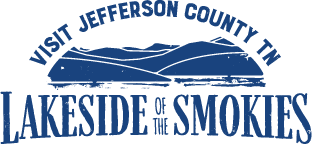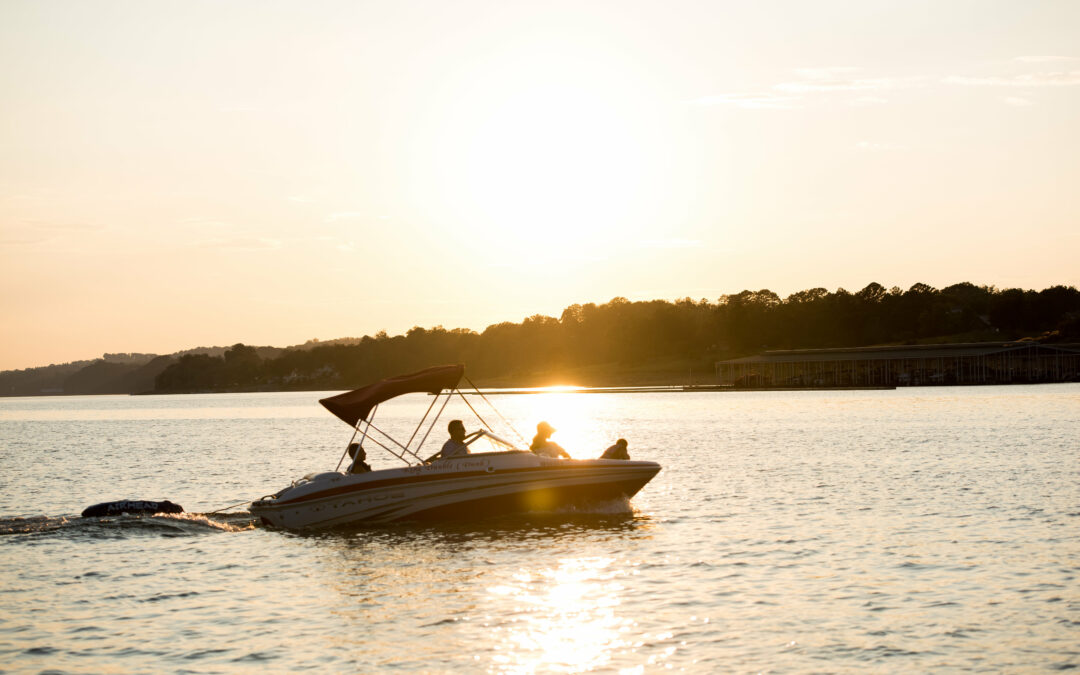It’s summertime and lake season is in full swing here in Tennessee. From Douglas Lake and Cherokee Lake framed by the Smoky Mountains in East TN to Tiptonville Lake in the Western corner of the state, there are so many beautiful lakes in Tennessee. Whichever lake you choose to enjoy, one thing remains the same, boat safety should be a top priority. Knowing and following the rules of the water makes for a safe and fun experience. In this article we will provide you with all the information you need to navigate the lake with confidence–TN boating regulations, boat safety tips, and resources for lake information and boating safety, along with some specific info about East TN lakes.
When are lake levels highest on East Tennessee’s waterways?
Like many Tennessee lakes, Douglas and Cherokee Lakes are technically reservoirs managed and monitored by Tennessee Valley Authority. As such, TVA raises and lowers the water levels throughout the year, depending on commercial and recreational needs and to prevent flooding in the surrounding areas. TVA maximizes water conditions in the summer, when the risk of flooding is lower, to support recreational boating.
Beginning in spring, TVA minimizes ‘drawdowns (the process of lowering the dam wall which reduces the water level) on its reservoirs, though some are still necessary to maintain area electricity levels. Much of the water levels from March until Labor Day depend on the amount of rain throughout the season. TVA provides up-to-date information on each reservoir it manages via this webpage and provides a downloadable app for lake information. Find lake level information for Douglas Lake here and Cherokee Lake here.
Who has the right of way on the water?
Just like on land roadways, Tennessee’s lakes, reservoirs, and rivers are filled with boating vessels of various sizes—from paddle boards and kayaks to jet skis and recreational motorboats to commercial barges. Who has the right of way depends on the vessel and the situation. Generally, boats approaching from the right have the right of way, and powered vessels must give way to vessels with less maneuverability. Some basic guidelines include:
Right of Way Order of Priority
Vessels being passed by other vessels
1.Commercial tows and other vessels restricted in maneuverability
2. Sailing or non-powered vessels
3. Power-driven vessels not restricted in maneuverability
Meeting Situations
- Vessels should generally meet and pass port (the left side of the boat) to port.
- At least one of the vessels should signal its intentions.
- The vessel with the right of way must maintain its course and speed until the other vessel is clear.
Overtaking Situations
- The vessel being passed has the right of way.
- The vessel being passed must hold its course and speed.
- Passing vessels should signal their intentions.
- The vessel with the right of way must maintain its course and speed until the other vessel is clear.
TENNESSEE BOATING REGULATIONS
You can find a comprehensive set of Tennessee’s boating regulations at the Tennessee Wildlife Resource Agency’s website. A basic overview of some of the biggest Tennessee boating regulation categories include:
Boater Education Cards: Anyone born after January 1, 1989, must carry a TWRA-issued card showing proof they’ve completed the TWRA boating safety course before operating a boat. Certification is not required if there is an adult born before January 1, 1989, on board to take immediate control of the vessel.
Operator Responsibilities: It is unsafe and unlawful to operate any vessel while under the influence. Boat operator responsibilities include adhering to swimming area restrictions, speed limits, no wake regulations, ensuring skier safety, proper passenger seating, and that the boat is not overcrowded.
Personal Flotation Devices (PFDs): Anyone under 12 years old must wear an approved PFD while on an open deck of a recreational boat. Each boat must have an appropriate-sized PFD for everyone on board (even non-motor-powered boats). PFDs should be readily accessible in an emergency and should have a Coast Guard approval stamp and number printed on them. Boats 16 feet in length or more must also have a throwable PFD.
Accident Reporting: Anyone involved in a boating accident is required to submit an official Boat Accident Report Form to the TWRA. If a passenger is injured, missing, or killed you must submit the report within 48 hours. If the property damage exceeds $2,000, you must report the accident within 10 days.
BASIC BOATING SAFETY GUIDELINES
Before Leaving
Some basic tips to ensure you have a safe and fun outing on Tennessee’s lakes include:
- Tell someone not accompanying you when you are leaving and when you expect to return
- Get a free vessel safety check at the beginning of the season
- Check the weather forecasts
- Ventilate bilges before starting your engine
- Check lights, distress signals, and sound producing devices
- Be sure your boat is basically equipped with PFDs for every person on board
- Pack an extra set of clothes, sunscreen, plenty of water, and a first aid kit
Carbon Monoxide Precautions
Motorized boating vessels exhaust a fair amount of carbon monoxide, and older vessels can pose a significant risk to passengers. Understanding the carbon monoxide dangers of exhaust outlets and idling can save lives, and all passengers should take a few key precautions:
- Avoid swimming near the back deck of the boat.
- Drag water skis, wakeboards, or flotation devices at least 20 feet behind the moving boat.
- Never enter an enclosed area under a swim platform where the exhaust is vented.
- Wait at least 15 minutes after turning off the engine before entering the water near exhaust vents.
Water Skiing, Tubing and Wakeboarding Safety Tips
Skiing, tubing, and wakeboarding are some of the most popular activities on Cherokee and Douglas Lakes, but they can also be dangerous at high speeds or with reckless boat operation. You can minimize safety risks by:
- Never tow skiers or tubers in highly crowded or high-speed boating areas
- Always have a spotter besides the boat operator on the boat
- Agree upon some basic hand signals with your spotter
- Only tow during daylight hours (It’s the law!)
- Double check the towline is free of the propeller or any other snags before towing
- Wait for the propeller to stop before getting back on the boat
ABOUT JEFFERSON COUNTY – THE LAKESIDE OF THE SMOKIES
Jefferson County’s two lakes—Cherokee Lake and Douglas Lake—offer some of the most pristine shorelines and best boating in the country. Nicknamed the Lakeside of the Smokies, Jefferson County lakes are framed by beautiful views of the Smoky Mountains. The Lakeside of the Smokies is only a 30-minute drive from Great Smoky Mountains National Park, so Cherokee and Douglas Lakes are great options for visitors seeking a day to cool off and escape the crowds. Jefferson County also offers hiking, golfing, and annual events throughout the summer. Check out these popular lake vacation rentals, lakeside dining options, marinas with pontoon and watersports rentals, and start planning your East TN lake vacation.

